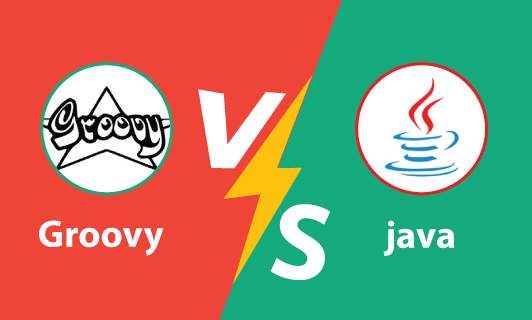Groovy vs Java: Choosing the Right Language for Your Project
In the world of programming, the choices are abundant, and one of the age-old debates revolves around the comparison between Groovy and Java. Both languages have their strengths and weaknesses, making the decision between the two a significant one that depends on your project’s requirements and your personal preferences. In this blog post, we’ll delve into the key differences between Groovy and Java to help you make an informed decision.
Background and Purpose
Java, a stalwart in the programming world, was introduced by Sun Microsystems in the mid-1990s. It quickly gained popularity due to its “write once, run anywhere” philosophy, robustness, and object-oriented nature. Java’s compiled bytecode makes it suitable for a wide range of applications, from web development to mobile apps and enterprise systems.
Groovy, on the other hand, emerged later as a dynamic language that runs on the Java Virtual Machine (JVM). It was designed to enhance and simplify Java development by adding dynamic scripting capabilities, concise syntax, and support for functional programming. Groovy’s creators aimed to make it an alternative that combines the best of both dynamic and static languages.
Syntax and Conciseness
One of Groovy’s standout features is its concise and expressive syntax. It’s often compared to Java with the repetitive and boilerplate-heavy code that the latter can sometimes involve. Groovy allows developers to achieve the same tasks with fewer lines of code, making it a favorite for those who value readability and productivity.
For instance, consider the following Java code snippet that reads a file using traditional Java I/O:
try (BufferedReader br = new BufferedReader(new FileReader("file.txt"))) {
String line;
while ((line = br.readLine()) != null) {
System.out.println(line);
}
} catch (IOException e) {
e.printStackTrace();
}
The equivalent code in Groovy is more concise and reads almost like natural language:
new File("file.txt").eachLine { println it }
Type System and Dynamic Nature
Java is a statically typed language, meaning variable types are determined at compile-time. This leads to early error detection and potentially better performance. Groovy, on the other hand, is dynamically typed, allowing for more flexibility but potentially leading to runtime errors that would only be discovered during execution.
Groovy’s dynamic nature can be advantageous for quick prototyping and scripting tasks where you don’t want to declare types explicitly. However, it might introduce complexities in larger projects where type safety and rigorous error checking are crucial.
Integration and Compatibility
Since Groovy runs on the JVM, it seamlessly integrates with existing Java libraries and frameworks. This makes it an excellent choice for projects that want to leverage Java’s extensive ecosystem while benefiting from Groovy’s expressive syntax and dynamic features. You can mix Groovy and Java code in the same project without any issues, which can be a practical advantage during migration or incremental adoption.
Performance
Java’s statically typed nature can lead to more optimized and predictable performance compared to Groovy’s dynamic typing. Java’s strict type checking at compile-time often results in faster execution at runtime. Groovy, while making code writing more efficient, might introduce overhead due to runtime type resolution and dynamic dispatch.
For performance-critical applications where every millisecond matters, Java might be a more suitable choice. However, modern JVM optimizations have improved Groovy’s performance significantly, and for many applications, the difference might not be substantial.
Certainly, here’s a simplified comparison table between Groovy and Java
| Aspect | Groovy | Java |
|---|---|---|
| Type System | Dynamic typing | Static typing |
| Syntax | Concise, expressive | More verbose, traditional |
| Integration | Runs on JVM, seamless integration | JVM-based, compatible with libraries |
| Performance | Slower due to dynamic typing | Faster due to strict typing |
| Community | Smaller community, active | Large, established community |
| Learning Curve | Moderate, unique features to learn | Moderate, conventional syntax |
| Use Cases | Scripting, concise code, prototyping | Performance-critical, enterprise apps |
Community and Learning Curve
Java boasts a massive community, extensive documentation, and a plethora of resources for learning and troubleshooting. Groovy’s community is smaller in comparison, but it’s still active and supportive. Learning Java might be relatively straightforward due to its conventional syntax and robust documentation. Groovy’s added features might require a bit more effort to master, but its rewards in terms of productivity and code clarity can be substantial.
In the Groovy vs Java debate, there’s no one-size-fits-all answer. The choice between these two languages depends on your project’s requirements, your familiarity with the languages, and the development team’s preferences. If you value a concise and expressive syntax with a focus on productivity, Groovy might be the way to go. On the other hand, if you’re more concerned about performance, strict type safety, and compatibility with a well-established ecosystem, Java remains a solid choice.
In many cases, the best approach might be to leverage both languages in the same project – using Java for performance-critical components and Groovy for areas where productivity and readability are paramount. Whichever language you choose, the key is to understand its strengths and limitations to make informed decisions that lead to successful and maintainable projects.

